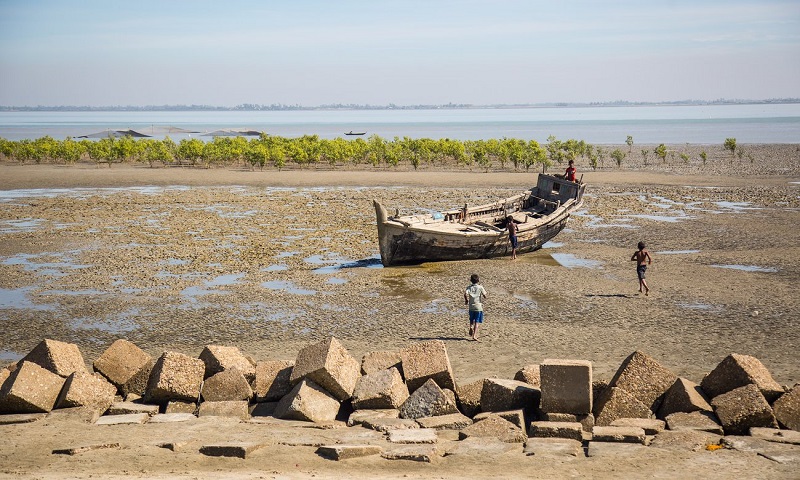On the climate change frontline: the disappearing fishing villages of Bangladesh

Kutubdia’s islanders don’t have much of a carbon footprint – most don’t have regular electricity. But they are facing the reality of a changing climate, and soon tens of millions of their fellow Bangladeshis will be at risk. Rising seas sweep away land and livelihoods in Bangladesh – in pictures by Karen McVeigh in Kutubdia, Bangladesh. A row of mangrove trees sticking out of the sand, exposed by low tide off Kutubdia island in the Bay of Bengal, is all that remains of a coastal village that for generations was home to 250 families. The villagers were forced to flee as their land, which had been slowly eroding for decades, was finally engulfed by the ever-rising tide five years ago. For the embattled people of Ali Akbar Dial, a collection of disappearing villages on the southern tip of the island in Bangladesh, the distant trees serve as a bittersweet reminder of what they have lost and a warning of what is come. The low-lying island of Kutubdia has one of the fastest-ever sea level rises recorded in the world, placing it bang on the front line of climate change, and the islanders are fighting a battle they fear is already lost. “I was born there, so were my parents and grandparents,” said Onu Das, 25, standing on a sandy coastal path atop a concrete embankment, pointing to a forest of mangroves. “There were mango, betel nut and coconut trees. Now we are landless and it is very difficult. We do not get food regularly. We fish. Somehow we are trying to survive.” “The ocean is torturing us,” said Pushpo Rani Das, 28, a mother of three who has had to move her home four times to escape storm surges. “We can’t stop it. Water enters my house in every high tide, especially in the rainy season.” Rani fears that soon her family will have to leave the island altogether. A 100 yards from where she lives, a half-built brick mosque lies abandoned, its cement foundations washed away. UN scientists predict some of the worst impacts of climate change will occur in south-east Asia, and that more than 25 million people in Bangladesh will be at risk from sea level rise by 2050. It is well known that many of the countries most vulnerable to climate change are among those who contribute to it the least, and here that’s certainly true. The carbon footprint of Kutubdia’s 100,000 islanders is small – most do not even have access to a regular electricity supply. But they fear that for them, time is already running out.

